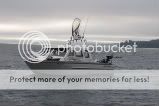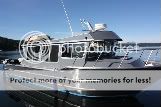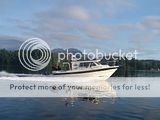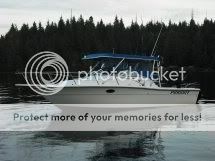Halilogger, stainless props of the same pitch are harder on the engine, they don't flex like an aluminum will. An aluminum when flexing is less efficient (slips) allowing rpms up a bit without all the bite..similar to a clutch = less strain and slower coming out of the hole. Also the stainless is much heavier and thus takes more hp to swing. I would never use an aluminum as there is way to much small stuff in the salt around here and they would be in the shop all the time getting straightened. Your comment about overdrive...is true with cars because the you have a transmission that compensates for load and changes in the road. Your boat has 1 gear. Forget about "performance" that sounds too much like what will she do wide open...who cares. Engine life is maximized by having your engine loafing along at the rpm you run at 95% of the time...for me that is 42-4400 rpms and 30 mph. A engine running lower rpms but working harder at those rpms will wear out faster than one running more rpms but with less strain on the moving parts. My engine is supposed to top out at 5400 wide open, with the prop I have on it my top rpm is probably around 5800...I never taken it past 5400 and it has only seen that number once or twice.






